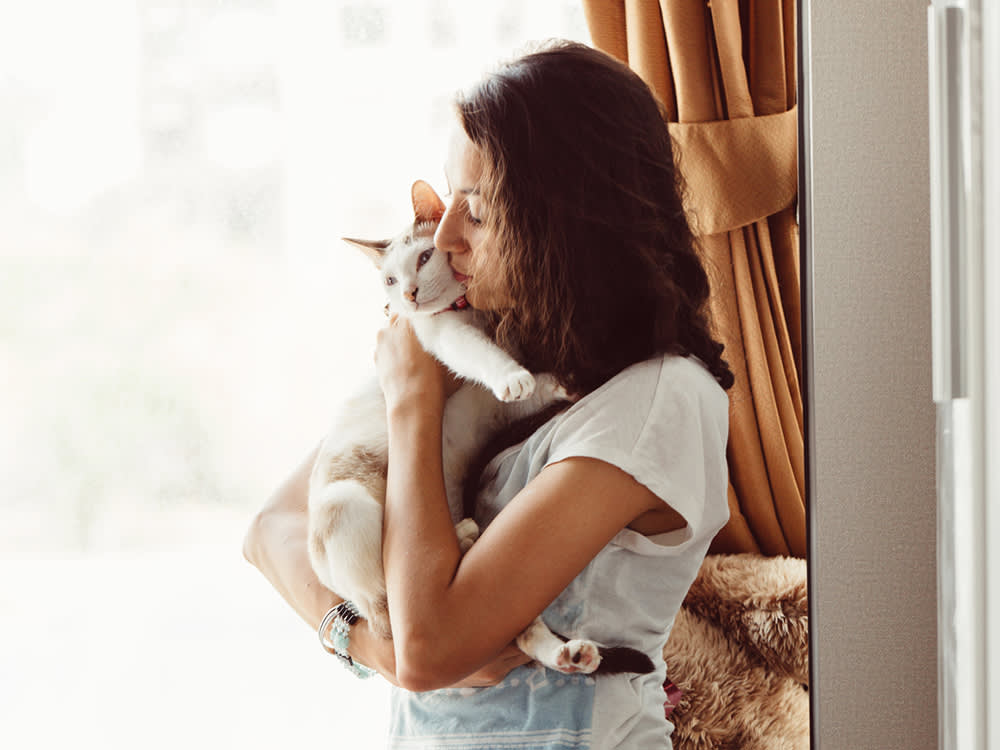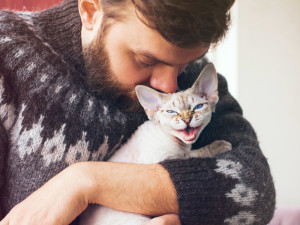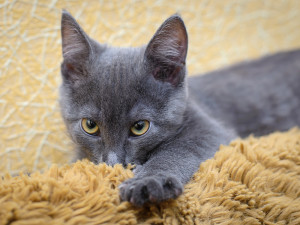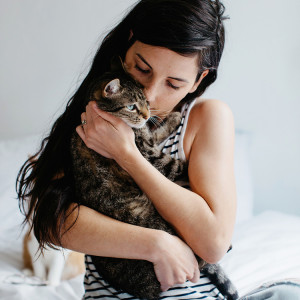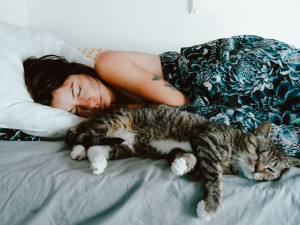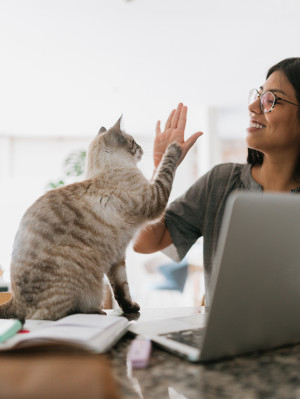Why Do Cats Purr?
Surprise: it doesn’t always mean they’re happy
Ahh, your cat is purring, which means all is well in their world, right? If only it were that simple to understand our cat’s state of mind. But alas, like most cat behaviours, purring is far more complex than you might expect.
When do cats purr?
The lion’s share of purring indeed happens when cats are engaging in good social interactions and are happy. One of the most common times people report their cats purring is when they’re stroking the cat – often when the cat is in their lap. The cat is relaxed, enjoying the grooming and attention while spending time with their person. Often a mama cat and her kitten will both purr while the young one is nursing, which is also a time when contentment reigns.
It’s often true that your cat is purring because they are completely content – cats do purr when they’re happy. They also purr at other times, which is why it’s important not to assume that purring equals contentment. There are cats who purr when exploring an unfamiliar area and cats who purr when they’re eating. Purring can be triggered by traumatic movements, by injury or by hunger. There are cats who purr when they’re greeting a friend and cats who purr when they’re about to be fed.
Purring is very individual in nature – some cats purr a lot, while others almost never do. Some cats begin to purr when they’re less than a week old, though many cats don’t show this behaviour until they’re much older. In cats who are just one or more weeks old, purrs may serve as an information beacon that allows their mum to locate them. Such vocalisations are called contact calls.
Purring makes cats feel better. It’s a way for cats to soothe themselves, which explains why cats sometimes purr in stressful situations. Purring may release endorphins that reduce pain when healing. The frequency range of purring is 25-150Hz with strong fundamental frequencies at exactly 25Hz and 50Hz, two frequencies known to be effective at stimulating bone growth and healing. The bass in a lot of music is around 50 Hz; for people, sounds at these pitches are often felt as much as they are heard.
How do cats purr?
The way cats produce their distinctive purring sound was unknown until recently. The vibration of the hyoid bone, which attaches the tongue to the roof of the mouth and supports the larynx, is responsible for the purrs we know and love. When the muscles in and around the larynx constrict and relax around the vocal cords, the vibration of the hyoid bone as the cat breathes causes the purring sound. Cats purr continuously since they produce the sound when they inhale as well as when they exhale.
In the domestic cat and other small cat species, the hyoid bone is solid, but its flexibility in the larger cats prevents the production of purring sounds. Cats in the subfamily Felinae (the small cats) such as caracals, cheetahs, cougars, bobcats, lynxes, servals and ocelots are able to purr in the same way that domestic cats do. However, cats in the subfamily Pantherinae (the big cats) such as lions, tigers, jaguars and leopards are incapable of purring. The differences in the anatomy around their vocal cords – specifically the flexibility of the hyoid bone – allow them to elongate their vocal cords. That allows them to roar, but not to purr. Some large cats can make a gurgling growl that sounds similar to purring, but only as they exhale. True purring occurs on both the inhales and the exhales, so scientists do not consider the sound made by large cats to be true purrs.
